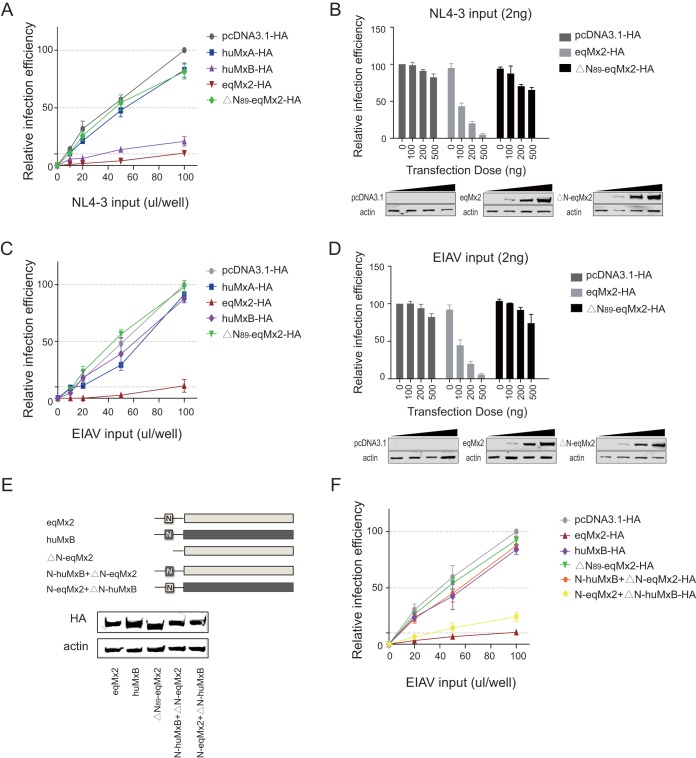FIG 6.
Inhibition of HIV-1 and EIAV by eqMx2 requires the N-terminal domain. (A) Effect of an eqMx2 N-terminal domain deletion (ΔN89-eqMx2) on replication of HIV-1. HEK293T cells were transfected with 1 μg plasmid pcDNA3.1 or plasmids expressing huMxA (negative control), huMxB (positive control), eqMx2, or ΔN89-eqMx2 and inoculated with increasing amounts (0, 10, 20, 50, and 100 μl) of HIV-1 luciferase reporter virus (NL4-3). Cells were lysed, and the infection efficiency relative to pcDNA3.1-HA was monitored at 24 hpi. Mean relative infection efficiencies with standard deviations from three independent experiments are shown. (B) HEK293T cells were transfected with increasing amounts (0, 100, 200, and 500 ng) of pcDNA3.1-HA or an eqMx2 or ΔN89-eqMx2 expression plasmid and inoculated with 2 ngRT NL4-3 at 24 hpi. Cells were lysed, and luciferase activity in the cell lysates was measured at 24 hpi. The data represent the means ± SE from three independent experiments. (C and D) Same experimental procedure as for panels A and B, except that inoculation was performed with the EIAV luciferase reporter virus. Different doses of eqMx2 or ΔN89-eqMx2 were identified by Western blotting, and actin was used as a loading control. (E) Schematic representation illustrating the huMxB (dark gray), eqMx2 (light gray), and chimeric eqMx2/huMxB (ΔN89-eqMx2, N-huMxB+ΔN-eqMx2, and N-eqMx2+ΔN-huMxB) proteins. Parallel samples as described above were analyzed by Western blotting. (F) HEK293T cells were transfected with 1 μg plasmids from panel E and challenged with increasing amounts (0, 20, 50, and 100 μl) of EIAV luciferase reporter virus. Cells were lysed, and the infection efficiency relative to pcDNA3.1-HA was monitored at 24 hpi. The data represent the means ± SE from three independent experiments.

